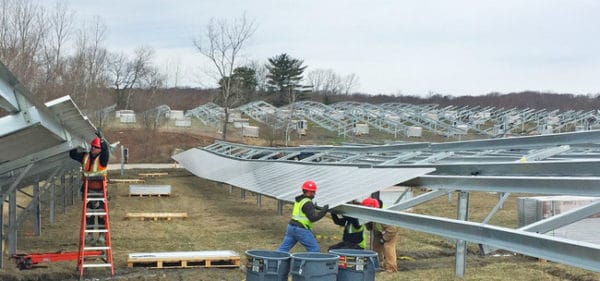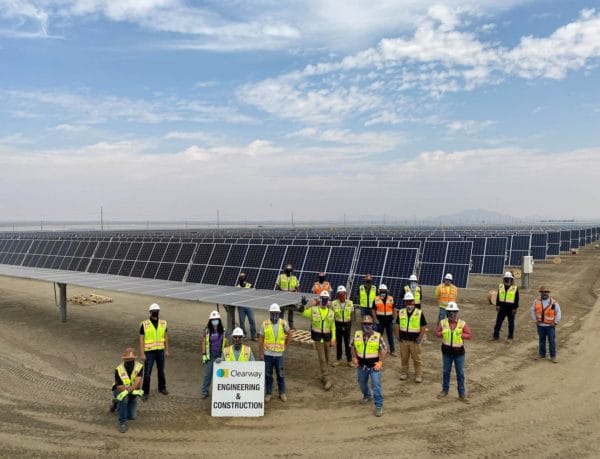Working together, we can and must ensure Hispanic communities benefit from and help shape the clean energy transition.
As Hispanic Heritage Month comes to an end, we recognize the influence and contributions of Hispanic individuals and communities to American history, culture, and economy. I call on individuals and companies to move from recognition to meaningful action.

As a first step, we must take a holistic approach to increase diversity and inclusion. At the root of a successful strategy that engages and benefits more American communities is the need to take the necessary time to understand and craft solutions that meet the needs and challenges of each community.
There is no one-size-fits-all approach; we need multiple strategies to ensure Hispanic and other minority communities benefit from and are involved in shaping how energy is built and used, whether that use is residential, commercial, or utility-scale.
According to Wood Mackenzie and the U.S. Energy information Administration (EIA), solar is now the fastest growing electricity generating source in the U.S., making it a key driver shaping the national energy debate. As the U.S. deploys more solar energy than ever before, it is increasingly important to ensure the inclusion of Hispanics and other communities in the solar industry as consumers, workers, and students.
Low solar adoption
The most recent census data shows that Hispanic-majority census tracts have 30% less solar installed than non-majority Hispanic census tracts. On average, Hispanics face a unique set of barriers and series of complicated factors such as race, ethnicity, income, and homeownership that make it difficult to take advantage of the benefits of solar. Some of those benefits could include lowering electricity bills by installing solar on the roof of a house or nearby office building, or participating in a community solar project.
A 2020 solar industry census found that although the number of Hispanic workers in the solar industry is growing, that growth is mostly within low-wage construction and maintenance positions. Hispanics are underrepresented in higher-paying (and less transient) industrial jobs and management.

Image: Ipsun Solar
The face of solar is still predominantly white with only 12% of executives and 20% of sales representatives being non-white. Studies show that Hispanic communities respond better to Hispanic and Spanish-speaking sales representative, which suggests that with more diversity among solar sales professionals and a more intentional community involvement strategy, Hispanic communities would likely be more comfortable with and able to take advantage of solar.
Creating early pathways for Hispanic students to access opportunities within the energy industry is an important element of long-term success. A 2020 study found that Hispanic and Black students are less likely than other students to choose or be driven towards STEM majors.
Studies indicate that enrollment in STEM programs is a good indicator that a student might ultimately end up working within a high growth industry like clean energy. The origins of this issue can be linked back to lack of exposure, resources, and access to STEM curriculums.
Understanding the unique needs of different communities and creating access pathways is hard, but worth it; there are a few key short- and long-term ideas to consider that can help individuals and companies develop sustainable and effective inclusion methods for Hispanics and other minority groups.
Company incentives
In 2020, collectively U.S. companies pledged to invest billions into justice, equity, diversity, and inclusion programs and initiatives. However, this must be converted to action to ensure those commitments and investments lead to real, identifiable, and positive change. We are starting to see small shifts, but the magnitude of these public commitments must be matched by action and holding investors and companies accountable.
Companies often make the mistake of taking an “add and stir” approach, or piecemeal approach, to diversity with limited success, when in fact “[t]he most powerful strategies to drive inclusion and diversity come from the business strategy, not HR programs.
The article continued, “When the business has the right focus, the HR practices add value. When done in isolation the practices have little or no long-lasting impact.”

Courtesy Conti Solar
Solar and other energy companies should establish both accountability mechanisms and metrics that require verifiable changes in company culture, HR programs, and business strategy. Bringing in outside resources with specific expertise in justice, equity, diversity, and inclusion to help companies align with leading practices and policies is a good first step.
Focusing attention on revamping hiring methods to bring on more diverse talent alone will not solve the diversity issue. Changing HR practices in isolation does not fix the fundamental lack of access that many Hispanic students continue to face when entering the workforce. Investment in education is key.
There are several programs across the country that focus on increasing minority access to energy and other technical fields, including the Future of American Energy that works with college-aged students, Project Green Schools that works with grade school students, and even more local programs like the Urban Alliance or Higher Achievement in the Washington DC area.
Community investment
When thinking about solar project development, it can be helpful to think about impact in three ways: project citing impact, project development impact, and project operations impact. First, investing in bridging cultural and language gaps in Hispanic communities will facilitate a better understanding of the potential community impacts associated with a solar project.

Image: Clearway Energy Group
This will help provide the foundation and insight necessary to begin to develop a plan that mitigates negative impacts and maximizes positive impacts,allowing the developers to learn how Hispanic communities view and value solar in their lives. A plan might include ensuring a project is constructed using zero-waste practices or that a project is co-located with a community garden or provides local educational opportunities for students to learn about solar energy.
Importantly, many of these impacts are in addition to the traditional benefits that come along with building new solar projects like job creation, energy bill savings, and increased environmental health; it just requires intentionality and focus to do more.
Together we can change the trajectory of American energy and increase equity and diversify within the renewable energy sector. We must act collectively and hold each other accountable.
Javier Chacon is an SREC customer operations analyst at Sol Systems.
The views and opinions expressed in this article are the author’s own, and do not necessarily reflect those held by pv magazine.
This content is protected by copyright and may not be reused. If you want to cooperate with us and would like to reuse some of our content, please contact: editors@pv-magazine.com.








By submitting this form you agree to pv magazine using your data for the purposes of publishing your comment.
Your personal data will only be disclosed or otherwise transmitted to third parties for the purposes of spam filtering or if this is necessary for technical maintenance of the website. Any other transfer to third parties will not take place unless this is justified on the basis of applicable data protection regulations or if pv magazine is legally obliged to do so.
You may revoke this consent at any time with effect for the future, in which case your personal data will be deleted immediately. Otherwise, your data will be deleted if pv magazine has processed your request or the purpose of data storage is fulfilled.
Further information on data privacy can be found in our Data Protection Policy.